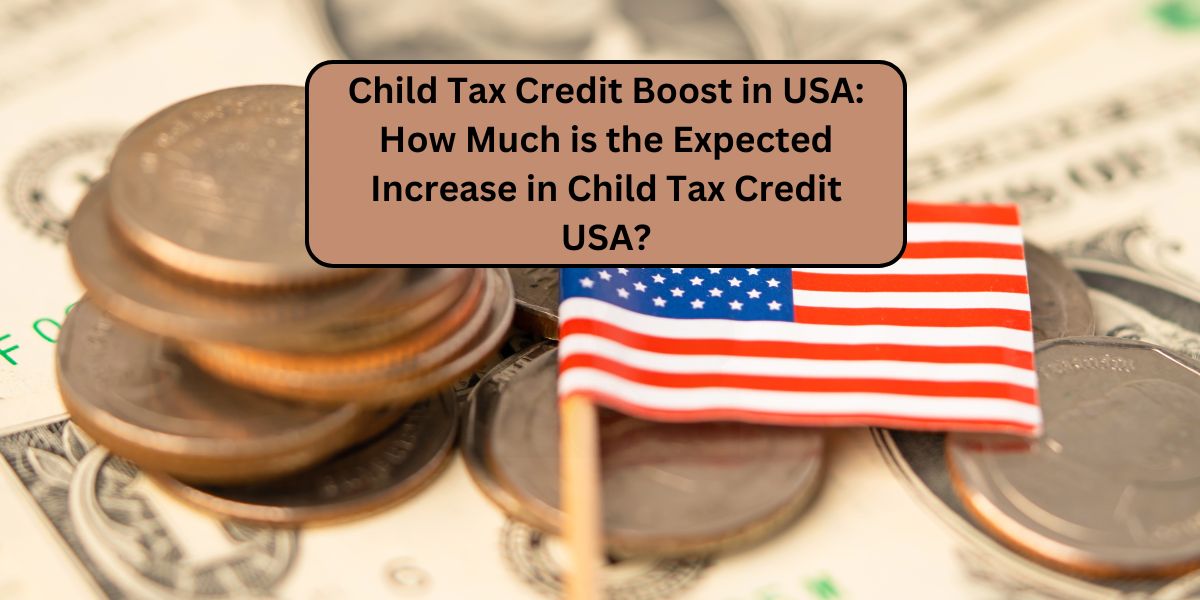This post will give you detailed information on the Child Tax Credit Boost: How much is the expected increase in Child Tax Credit USA.
Increased Child Tax Credit in the USA
The Child Tax Credit Boost is a sign of the US government’s commitment to helping families raise children and improve household finances. The CTC credit is now worth $1,700 in the 2024 tax season (returns filed in 2025).
Parents and caregivers need to be familiar with these numbers because they will impact the annual tax calculations and may increase the amount of tax credits that are eligible. If you want to know how the tax benefits will change in the future, it is possible to look forward.
This post covers the Child Tax Credit Boost and its benefits and effects for eligible beneficiaries.
What is the Child Tax Credit?
The US government extended the Child Tax Credit to all taxpayers across the country in order to provide a certain level benefit to your children. The American Rescue Plan provides the largest Child Tax Credit in history to working families.
On the official website, all Americans with children younger than 18 can register to receive the USA Child Tax Credit. To receive the credit, you will need to provide your dependent child’s Social Security Number.
By 2023, the majority of families will receive automatic payments each month of $300 or $250 per child. Certain taxpayers are eligible for partial refunds of their benefits through the “additional Child Tax Credit” (ACTC).
Child Tax Credit Increase in USA Overview
| Post title | Increase in Child Tax Credit in the USA |
| Providing By | IRS |
| Amount by 2024 | Over $2000 |
| Beneficiaries | Families with young children (under 18 years old). |
| Click Here for More Information | Click Here |
What is the expected increase in child tax credit USA?
The kid Benefit Plan will provide $2000 to all eligible US taxpayers for each child in 2023 upon registration. The UK Parliament has passed new legislation that will increase the child and dependent tax credits from $180 per year to $440 by 2024 (or 310 in 2023), and remove the cap on two dependents.
American Rescue Plan increased the Child Tax Credit from $2,000 for children older than six to $3,000 and from $2,000 for children younger than six to $3,600. The maximum age has also been raised from 16 up to 17.
The credit will be given to all family members who earn up to $112,500, or $150,000 for a couple. You can receive an additional $1700 from the IRS if you apply for the IRS Child Tax Credit Plan 2020 on the official IRS website.
Increased Eligibility for Child Tax Credit
This section summarises the eligibility requirements:
- The child must be younger than 17 years old at the end of the fiscal year.
- The child must reside with the taxpayer. Temporary absences due to reasons such as education, health, military service, or juvenile prison are not always permitted.
- The taxpayer must meet certain requirements to be able to file as single, head-of-household, married couple filing jointly or qualified widow/widower with dependent child.
- Only half of the child’s own contribution is allowed during the tax year.
- Different thresholds for phase-out are applicable depending on the status of the filing.
It is important to know that you can receive additional refunds if your child meets the age, relationship and residency requirements.
Final Thoughts
The Child Tax Credit has an impact on families even in 2024. Its monthly payments stimulate the family. The Kid Tax Credit 2024 provides a tax benefit up to $2,000 for each qualifying dependent child to American taxpayers with children under 17 years of age.
Some taxpayers can get a partial credit of up to 1,600 dollars when they file their taxes in 2024. However, the main component of the Additional Child Tax Credit is not refundable. The Child Tax Credit Stimulus Payment 2024 not only helps families with their financial burdens but also improves the well-being of children by reducing child poverty.
Be aware of the income limitations. Individuals with a modified adjusted gross (MAG) income under $200,000 or $400,000 for married couples filing jointly are eligible. If your income exceeds these limits, you will lose $50 per $1,000.

